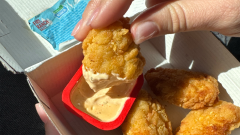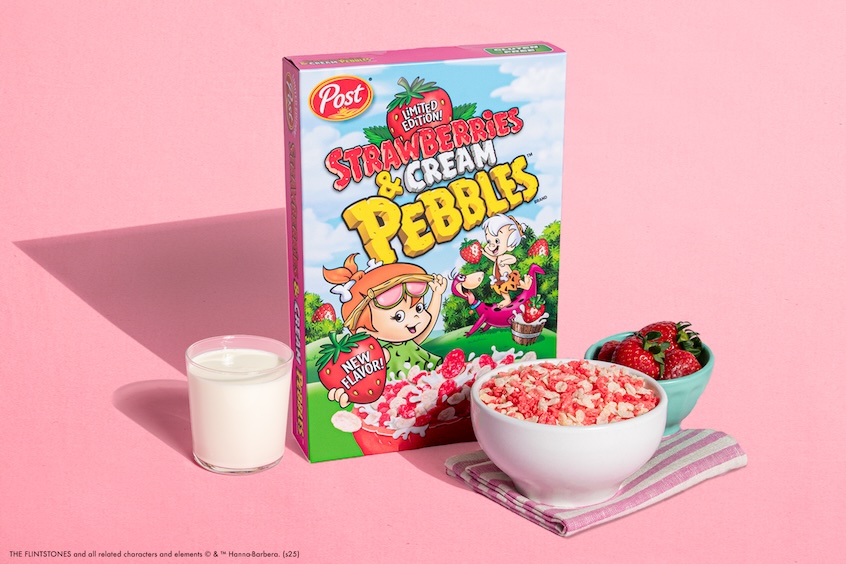Here Are 7 Facts You Never Knew About Microwaves
 Photo Credit: Chris Kelly
Photo Credit: Chris Kelly
There’s a reason more than 90 percent of American households have a microwave: why, it’s a wizard’s tool of the dank tasty! Oh, microwave — beloved television of the kitchen, blessed temple of the warm snacks, fruitful god who protects the wanting—you are the truest of cooks.
But the microwave, even though it gives and gives and gives, still racks up a bad rep at times because of myths and college-student dependency (and, okay, a few facts). The prized 20th century invention can be as dangerous as it is fascinating. Let’s talk about what makes the microwave the alluring little enigma it is.
1. The microwave was invented by accident.
Standing in front of an active radar set while working on magnetrons, Percy Spencer noticed the candy bar in his pocket had melted. Intrigued, Spencer, a leading expert in radar tube design, decided to experiment, ultimately creating a high-density electromagnetic field within a metal box that would go on to live in infamy as how we heat up burritos.
2. Popcorn was the first food tested in a microwave.
Once that magical box of microwaves was built, Spencer naturally had to test it out, and his first choice could not have been more perfect: popcorn. It went beautifully, bouncing everywhere. The next day, he tried his second selection of food: an egg. It obviously exploded, but not be before a stunned engineer put his face a little too close to behold the new machine’s wondrous power. Actually, that one might’ve just been a hilarious prank.
3. The first microwave sold for $5,000.
Called the “RadaRange,” the machine was unsurprisingly a bigger robotic beast than the cutesy cozy little kitchen pets we know today. Weighing 750 pounds and standing just under 6 feet, the first commercial microwave sold for $5,000 ($52,628 today). It was also waaaaaay more powerful than today’s microwave, cooking a full potato in 30 seconds.
4. Nobody wanted to buy a microwave when it came out.
According to Spencer’s grandson, Rod, also an inventor, “The microwave oven eventually became known as Raytheon’s largest commercial failure, and the reason why was that, like so many other failures, they saw the cool technology but they didn’t understand the market.”
5. Microwaving plastic-covered food can give you cancer; standing next to it won’t.
Putting plastics in a microwave is rarely a good idea, since chemicals will leach into your food when the containers break down. In a 2011 Environmental Health Perspectives study it was revealed that even “BPA-free” plastics leach estrogenic chemicals that could cause cancer. However, keep in mind that microwaves are not filled with cancer-causing radiation, nor does it spill out into the air when you open the door. Feel free to stand in front of it while it zaps your leftovers back to life.
6. Nutrients can change in a microwave, but they don’t decrease. They might actually make your food more healthy.
“There is no specific harm of microwaving with regard to nutrient levels,” says David Katz, MD, director of Yale University Prevention Research Center.
Some food particles, such as vitamins and omega-3 fats, can shift in their sensitive reaction to heat. In cooking, veggie nutrients sometimes leach into the water being used, but since you typically use much less water in a microwave, the food might actually stay healthier than if you had cooked it another way.
7. Metal can be okay inside a microwave, as long as it’s not thin or sharp.
At times, it seems like everyone’s under the impression that if you so much as think about having any metal in a microwave, your house explodes. That’s not the case. Instead, it comes down to what kind of metals you put in there.
See, the appliance’s microwave radiation bounces around, attracting all the metal’s electrons. If they get caught in a dead end (like a fork) or a kink (aluminum foil), it creates a concentrated area of negative charge, which goes haywire once it hits air. Thicker, flat pieces of metal heat up slowly, so they aren’t really too dangerous, as they work much like the walls of microwaves themselves. Things made of materials, such as ceramics and glass, won’t absorb radio waves at that frequency, so while they heat up, it’s not enough to go bizerk.






















